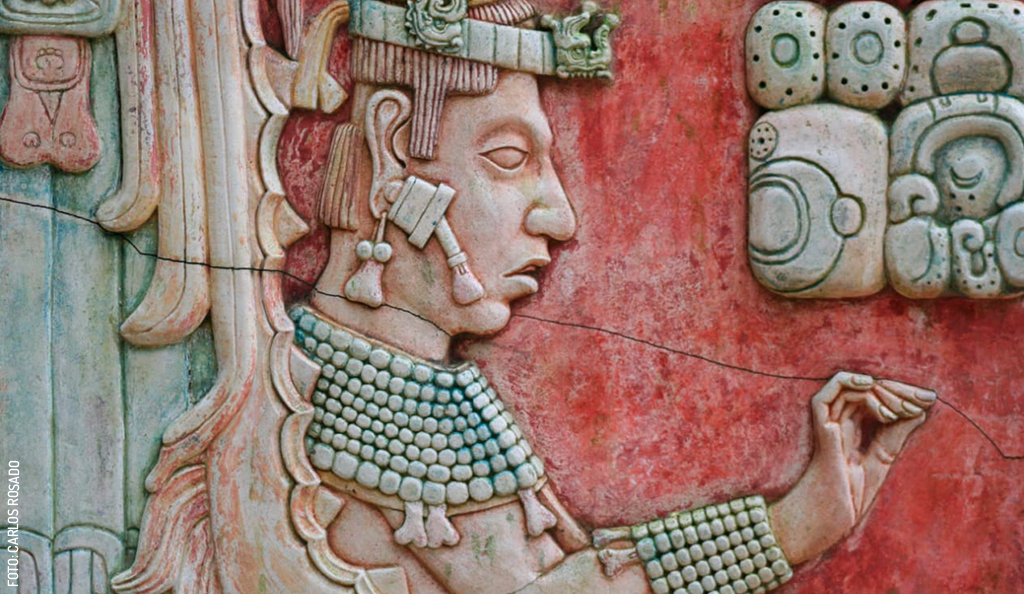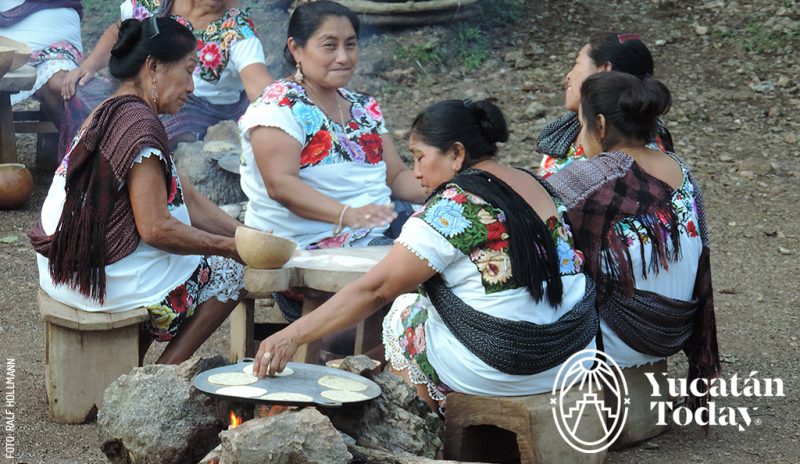
The Maya Language Lives On
 The peninsular Maya language, or Maayat'aan, has a history that is being written to this day.
The peninsular Maya language, or Maayat'aan, has a history that is being written to this day.
According to official data from 2020, in México 774,000 people speak Maya and, of those, over half a million live in Yucatán. In fact, while the Mexican government considers Maya to be the second widest-spoken indigenous language in Mexico, the first one, Náhuatl, actually comprises several languages and dialects. Maayat’aan, however, is a single language in which three quarters of a million people can communicate with one another.
While the Maya language has been spoken non-stop since before the Spanish conquest, its writing system is a different story. As with most languages in the 16th century, only the elite could read and write it. This meant that, because of the Spanish Conquistadores’ desire to destroy all pre-Hispanic heresy, the original glyph writing system became practically lost for centuries; Yucatec Maya was, then, a strictly spoken language, but now, its speakers are making an effort to spread it, incorporating it into all areas of daily life, and thus, protect it from extinction.
One of the first steps towards that goal was the standardization of its writing. In Yucatán, the Maya Language Academy has existed since 1937; it was only in 1984, however, that the practical alphabet of Maayat’aan was defined. This effort, carried out less than 40 years ago, was the first to involve native speakers, educators, and linguists of this language that has been spoken here for centuries.
Let me tell you some interesting facts about the Maya language that is spoken in the Yucatán Peninsula.
There are two varieties of Maayat'aan
The Jach (pronounced like “hatch”) Maya is the traditional, pure, and “true” variety, spoken by the elderly and the inhabitants of the most remote villages of Yucatán. The modern variety is called Xe’ek’ (pronounced similarly to “shay-ache”); this is a word that means “mixture,” and lives up to its name, as it includes words and structures loaned from Spanish. Xe’ek’ Maya is spoken in the Henequén area and in the surroundings of Mérida, where fluency in both languages was most necessary.
The Maya alphabet consists of 45 different sounds
Modern Maya writing uses many of the same latin-script letters as Spanish and English, but there are important differences. The English alphabet has 26 letters: 21 consonants and five vowels. Nine of those consonants do not exist in Maya (C, D, F, G, H, Q, V, Z), and still, Maya has 20 consonants. That’s because in Maya there are five consonants that have two different pronunciations, and each of those counts as a different letter. An example of this is precisely the name of the language: Maayat’aan. Here, the T’ has a different pronunciation than it would if it were just a T. So, out of 45 sounds, we have 20 consonants, which leaves us with…25 vowels.
And you thought English having 20 was overkill! The vowel situation is similar to the consonants’: a, aa, áa, a’a, and a’ are five different letters. They all sound similar to that in the English word “trap,” but they differ in length and tone. Chak (red) is not the same as chaak (cooking, which is a longer word), cháak (rain, which changes tone mid-way), cha’ak (starch, which includes a pause mid-word), or cha’ (chewing gum, which seems to end suddenly).
The Spanish R made its way into Maayat'aan
Yucatec Maya words don’t usually include the letter R; however, because many loanwords use it, it was kept. This is a unique case: all other consonants that are not included are represented with other letters (such as K for C and Q) or are substituted outright. The F, for example, is pronounced like P, so if you know a Fátima, her Maya name would be Pátima.
Janal Pixan, but also Acanceh and Zací
Many places in the state have names using old spellings, inconsistent with the current writing system. As a funny sidenote, in those, the H (which is mute in Spanish) is supposed to be pronounced like it is in English. You’ll see words like Acanceh, which is pronounced Akankay, but should actually be spelled Áakankéej. However, the 1984 Conference agreed that all names for people and places would keep their traditional spelling, unless the Maya themselves agreed otherwise.
As of today, the biggest challenge Maayat'aan faces is the reason why it has survived this long: it is widely spoken, but not written. Discrimination (explicit, implicit, or unintended), however, has meant that it is spoken increasingly less. That is why institutionalization (normalizing and valuing the Maya language) is so important, as is spreading its use in writing.
Doing your part is now easier than ever before. Public institutions like the CECIDHY and the INDEMAYA offer free or very low-cost classes, in-person and online. There are also plenty of private language schools, as well as great-quality, free online content. For example, check out Santos Tuz (IG: santos_tuz), a 22-year-old boy who started teaching Maya through TikTok during the first lockdown. To this day, he continues to share little lessons on social media.
If you’re interested in the Writing Norms for the Maya Language, they are available on the website of the National Institute of Indigenous Languages (INALI). Ready? Ko’one’ex t’aan maya (let’s speak Maya)!
This article would have been impossible without the material prepared by Dr. Fidencio Briceño Chel, a wonderful teacher and a wonderful person, native speaker of Maayat'aan, and undoubtedly one of the most renowned linguists in México.
Photography by Yucatán Today and Sergio Núñez for its use in Yucatán Today.

Author: Violeta H. Cantarell
“Meridana,” traveler, animal lover, passionate reader, commentator, and enthusiastic promoter of the natural and human beauty of Yucatán.
¡Receive the latest articles and much more from the best of Yucatán in your email!
Related articles

Say It in Maya
Here we explain some differences with Maya and the most common phrases you can learn to say hello and goodbye in Maya.
Popular Yucatecan Beliefs, my Chichí's Advice to Good Health
I have many memories of my “chichí” (my grandma, in case you’re unfamiliar with the Maya word) from when I was young. She was always giving me...





